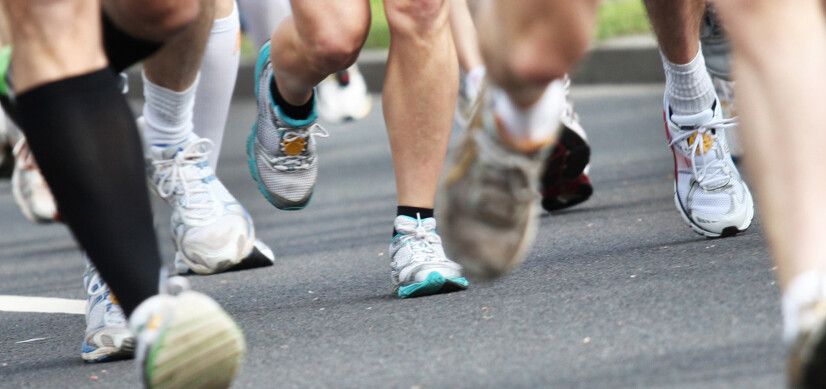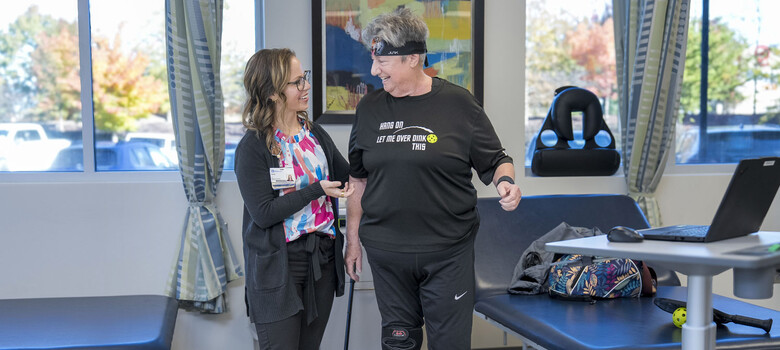 From the DukeHealth.org archives. Content may be out of date.
From the DukeHealth.org archives. Content may be out of date.
Knowing When Pain is Normal, and When to Seek Care

Debra Pasquale is an experienced long distance runner who travels the world to participate in marathons. She’d been running for almost seven years when she started feeling pain in her knee.
“I thought I’d just been overtraining,” Pasquale says. “But when I realized I was changing the way I was running to accommodate the pain in my knee, I knew something was more seriously wrong.” At Duke Orthopaedics, she discovered she needed joint fluid therapy. Almost two years later, she felt the familiar pain—this time in both knees. “This time, I knew exactly what it was and headed straight to the doctor,” she says. Whether you’re a weekend warrior or you are consistently active, sometimes it’s hard to know what “normal” pain is after an activity—and when you should seek medical care.
When to Seek Medical Care
Andre Grant, MD, a Duke orthopaedic surgeon, says it’s a common concern. “Sometimes it’s hard to know how much pain is normal after exercise and when it’s abnormal,” he says. “The motto is ‘no pain, no gain,’ but that holds true only to a point. There’s no gain from certain kinds of pain.”
For example, Dr. Grant says, it’s completely normal to feel some discomfort after exercise, especially if you’re just starting out and haven’t been active for a while. “The whole goal of exercise is to stress the muscles, ligaments, and tendons of the body so they’ll respond and become more toned,” he explains. “As you stress your body beyond normal thresholds, over time it increases its performance. So that’s good. But those muscles and ligaments need time to respond and recover afterward. That’s the typical discomfort you probably feel.”
This kind of pain should subside either immediately after you finish your activity or a day or so later. “But any discomfort you’re feeling more than a few days after exercise is getting into an area that’s not really normal,” Dr. Grant says. You may have overstressed your body beyond a safe zone.
“The first clue to knowing that something may not be exactly right is if you’re having problems sleeping because of the pain,” Dr. Grant says. “If you’re uncomfortable doing things like driving to work, or if you can’t sit down for a long time, listen to your body and head to the doctor.”
How to Minimize the Pain
One way to help minimize hurting yourself in the first place is stretching. “It’s integral to starting any athletic activity or exercise,” Dr. Grant says. Ease your body into activity by stretching, so you’re warming up the muscles and stretching the tendons. But find the right balance: Don’t spend so much time stretching that by the time you exercise, your muscles are already starting to fatigue. Dr. Grant suggests a good, short warm-up performing the lower threshold of the exercise you’re about to do—walking before running, or stretching your arms before tennis, for example. “Your goal is just to get your heart rate up a bit, start the blood flowing, and get the tissues of your body ready to participate in that activity,” he says.
And if you do push too hard and find yourself injured? Duke Orthopaedics can help. “We’re unique in that we have special training in all parts of orthopaedic medicine,” Dr. Grant explains. He has worked with athletes in high school through college, semi-pro, and professional teams. “We’re able to give Wake County cutting-edge medical care.”



